If you asked Adam Laboga where the world’s best guitar amplifiers are built, he’d tell you that they’re built in a small shop in Wroclaw—Poland’s fourth largest city. Laboga’s son Eryk (who’s here translating for us) seems to agree. The three of us are sitting in the Laboga Amplifiers workshop, where Poland’s best guitarists have been getting their amplifiers for several decades now.
Since moving to Poland two years ago, I’ve heard a lot of hype about Laboga amplifiers. And to be honest, I didn’t give it much attention at first. But as I began to hear—and, eventually, to play—these amplifiers more and more often, I began to embrace and spread a lot of the hype myself.
That’s why I wanted to sit down with Adam Laboga, the man behind the company that has been such a major part of Polish rock music, to learn more about the company and how Laboga got started building his own amplifiers.
Laboga Democratized Tone in Communist Poland
It’s hard to pinpoint exactly when Poland’s obsession with rock music began, but it’s easy enough to cite its defining moment. When the Rolling Stones were unable to get the Moscow date they wanted on their 1967 European tour, they were forced to turn elsewhere for their Eastern Bloc fix. As a result, a concert was hastily (and surprisingly) booked for April in Warsaw’s Palace of Culture and Science.
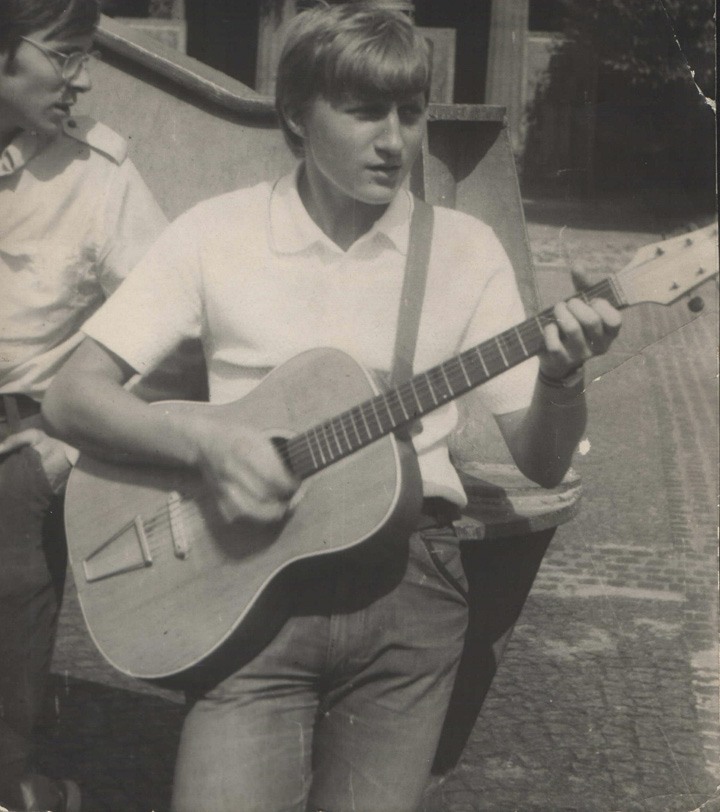
This was the first Western rock and roll band to appear behind the Iron Curtain, and naturally, it was a complete disaster. Though the audience was instructed to behave beforehand and threatened with removal otherwise, a riot broke out that continued to spill into the streets—much to the dismay of the government. They were dealing with the Rolling Stones, after all.
The rioting eventually calmed down, but the damage had already been done. Warsaw had gotten a taste of pure rock and roll from the Stones, and they were hooked. The music style continued to permeate the society, and Adam Laboga was among the many Polish youths who joined rock bands in the late-’60s. The communist authorities largely acquiesced to the new fad, though agents would attend concerts to ensure that lyrics weren’t crossing any lines.
The biggest problem for Polish bands, rather, was obtaining amplifiers. Only the country’s most prestigious acts—such as the blues rock group Breakout—were able to get Marshall amplifiers by touring Western Europe. Less fortunate bands had to be more resourceful.
As a result, Laboga (who was studying electronics at university) designed and built a five-input PA system for his band’s performances. It quickly became clear to him that, as opposed to playing guitar, building amplifiers was actually where his talents were, so he began to focus exclusively on that.
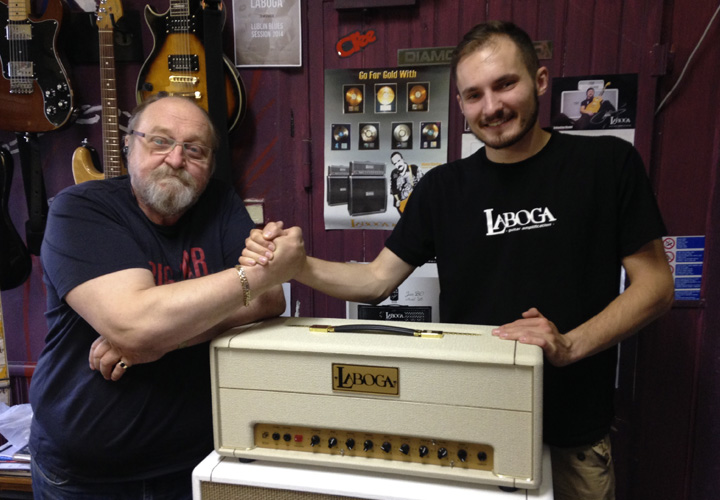
In 1973, Laboga built an amplifier for Joachim Rzychoń, the then-bass guitarist for the famed Polish band Niebiesko Czarni. This was a turning point for Laboga, whose reputation continued to grow until he became the Polish authority in amplifiers—a title he still holds half a century later.
Laboga Goes Back to Its Roots with the Diamond Sound
Adam Laboga’s first guitar amplifier—a modified Marshall Plexi design—was called the Diamond Sound. The name and the use exclusive use of 1970s-era technology make a return in Laboga’s premium amplifier series, which technically and visually recalls the Marshall.
The Diamond Sound comes in either a 50- or 100-watt configuration, powered by either two or four EL-34 power tubes in class AB operation. The preamp stage is also reminiscent of the Marshall Plexi, using three ECC83 (12AX7) tubes. Available as a combo or a head, Laboga sells a specially designed cabinet for the amp, equipped with two 12-inch Celestion Vintage 30 speakers.
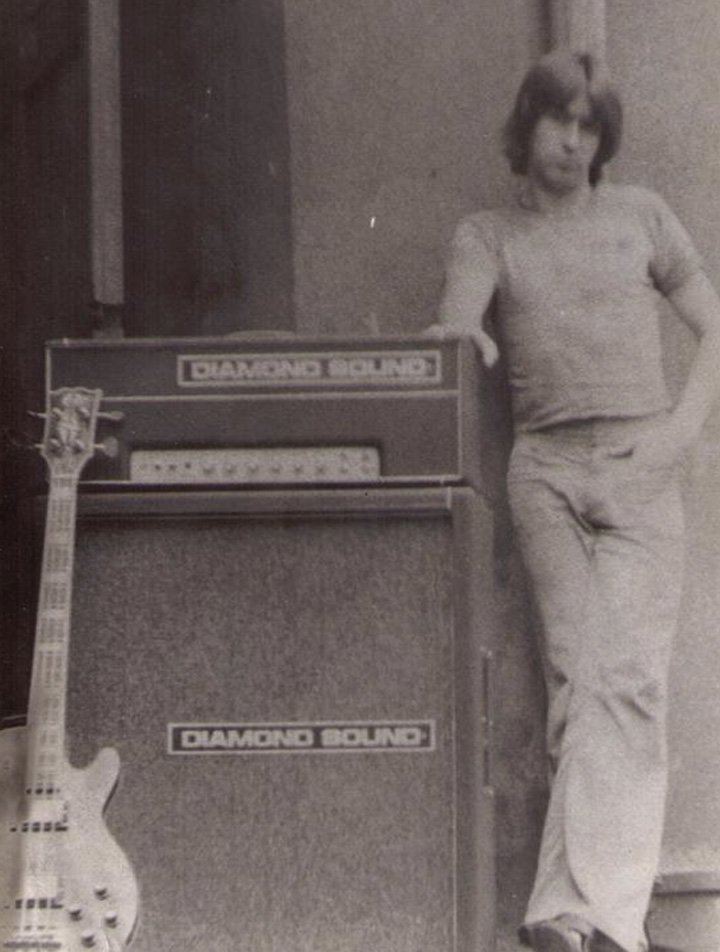
The two-channel amp has a relatively simple layout, with a single EQ stage for both the distortion and clean channels. The EQ stage has a mid-boost switch, and the clean channel has a bright switch. The distortion channel includes a boost function called “solo,” which the player adjusts with a knob on the amp’s front panel and then activates via footswitch.
Like all Laboga products, the amp is built by hand. What sets the Diamond Series apart is that its components are wired point to point, without the use of a circuit board, and the chassis is made of aluminium as opposed to steel to minimize electromagnetic interference.
Applying these techniques—the merit of which are hotly debated—to a Marshall Plexi-type circuit reminded me of Ken Fischer’s Trainwreck Express amplifiers, so I asked Adam Laboga if he had ever heard of Trainwreck Circuits. To my surprise, he hadn’t. Later on in the interview, I asked Laboga what he thought of Alexander Dumble’s work, but Laboga hadn’t heard of him either.
When I asked Laboga about what sounds he chased in designing the Diamond Sound, he simply repeated the examples I had mentioned while asking my unnecessarily long-winded question: Clapton, Stevie Ray, Jimmy Page, and Jimi Hendrix. Beyond that, I was unable to extract what design principles or insights guided his hand.
However, Laboga did give me a chance to try out the Diamond Sound for myself, and as soon as I plugged in, everything else melted away. Who, what, and why were simply replaced with “wow!”
The Diamond Sound Lives Up to the Hype
I played both a Gibson Les Paul Standard and a Fender American Stratocaster through the Diamond Sound and its dedicated, celestion-loaded cabinet. Regardless of which model you plug in, the first thing you notice about the Diamond Sound is how exceptionally quiet it is—even with the gain turned all the way up.
As expected, the amp produced wonderfully rich overdrive tones with the Gibson. Notes sustained indefinitely and their harmonics multiplied without getting muddy, even when playing chords. This amplifier is clearly the result of a careful design, supported by discerning ears and quality components.
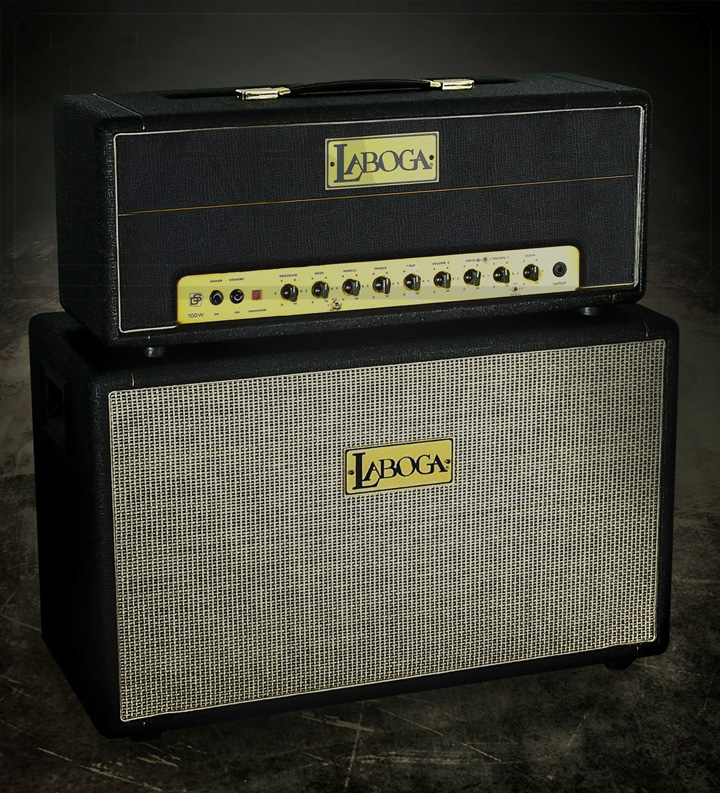
The Diamond Sound loves Stratocasters, too. Surprisingly, the overdrive with the Stratocaster didn’t sound all that different than what I achieved with the Les Paul. The amplifier has a distinct character at high-gain settings that overcomes the tonal particularities of the guitar. Rolling off the gain a little, though, makes the Strat chime more evident.
The Strat sounded best on the clean channel, accurately conveying and even developing the distinct sounds of each pickup selector position. I was able to achieve the classic tones (Lenny, Little Wing, etc.) along with some serious western twang. Turning the clean channel all the way up leads right into Stevie Ray Vaughan territory, with notes that cut clearly and sustain that has the slightest hint of fuzz.
Laboga claims that the amp will sound good no matter how you set the EQ—something I was too distracted to test because of how good the thing sounded with all knobs at 12 o’clock. As with any good musical instrument, I felt like the Diamond Sound sucked me in and turned my guitar into a mere conduit between the amp and the music that hides in my subconscious.
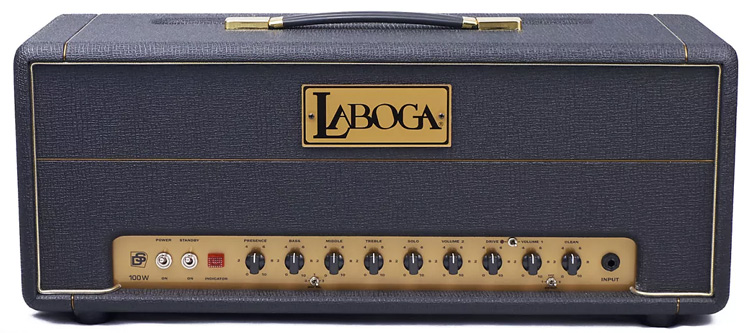
It’s never a good idea to judge an amplifier solely on how it sounds by itself, though. It needs to hold its own in a band setting, too, so I asked Eryk Laboga if I could take a Diamond Sound on the road with my band. He declined, stating that every Diamond Sound in stock (including the one I was messing with) already had an owner. Instead, he offered that my band take two Laboga Alligators—an offer that I eagerly accepted.
On the Road with the Laboga Alligator
Before Laboga began producing the Diamond Sound, the Alligator was its premium amplifier, targeting players of rock, blues, and jazz. (Mr. Hector, Laboga’s best-selling amp, is designed for metal and won’t be covered here). Available in either 50- or 30-watt versions, the Alligator is a class A amplifier with two 12AX7s in the preamp, four EL84s in the power stage, and a spring reverb unit.
My band used the Alligators for two shows at the Suwalki Blues Festival near the Lithuanian border and for a club gig in Warsaw. I used a 30-watt Alligator, while the other guitarist used the 50-watt version. The only reason I opted for the 30 is because it looked particularly good when paired with its matching cream-colored 2x12 cabinet, loaded with Celestion G12H75 “creamback” speakers.
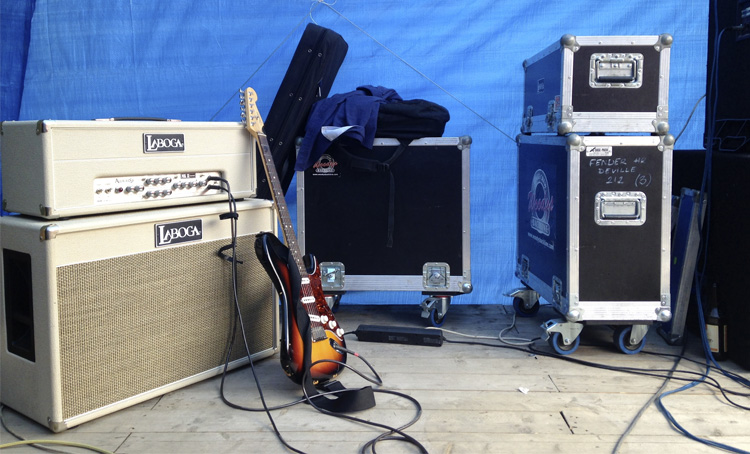
Like the Diamond Sound, the Alligator has a clean and a dirty channel, but in this case, both channels have a bright switch (which I activated because I found the bass to be a little boomy). The particular amp I used also had separate EQs for each channel—a feature that I did not use because, just like the Diamond Sound, the Alligator sounded great with a flat EQ.
The Alligator allows the player to set up two gain levels on the dirty channel, which are selected via footswitch. This arrangement is similar to the Diamond Sound’s “solo” boost function, giving the user three different sounds at the tap of a foot.
The clean channel is designed to provide light overdrive at high volumes, so it’s possible to set the amp up to provide bluesy crunch on the clean channel, moderate clipping on the dirty channel’s gain one, and then insane distortion on the dirty channel’s gain two.
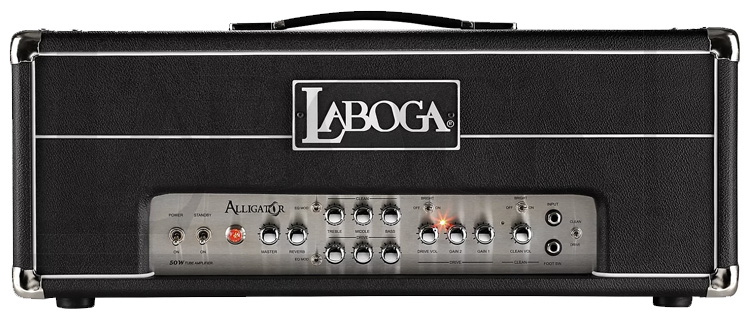
A feature that I initially found pointless was a master volume that applied to both channels, each of which already had a dedicated volume knob. But when the engineer asked me if I could turn down just a little during sound check, I was able to quickly do so by tweaking the master knob, which kept intact the relative volumes of the clean and dirty channels that I had set up. So the master volume proved useful after all.
The Alligators sounded and felt great on stage, and from the recordings of our shows, we heard how well they cut through the mix and accurately conveyed the nuances of our playing—even after the sound engineer made us turn down our beasts. Like the Diamond Sound, the Alligator seems to be designed to deliver the mid-range punch that an amp requires to deliver good tone without being too loud.
The Bottom Line
I’m not the right person to confirm whether Laboga’s claim of having built the world’s best guitar amplifier is accurate. And I’m not sure whether any guitarist is perfectly positioned to make such an assertion—and to cope with the inevitable backlash from passionately opposed factions of the guitar community.

What I can state with confidence, however, is that the Laboga Diamond Sound and Alligator may be some of the best amplifiers I’ve ever played. The only other amps that come close are a Fuchs and a Dr. Z I once played at a blues jam, a mysterious Fender Bassman residing in my former bandmate’s basement, and superbly built clones of Dumbles and Trainwrecks by Ben Shelton in the early 2000s.
With many guitarists abandoning tube amplifiers and adopting lighter, more reliable, and almost-as-good-sounding solid-state and class D units (such as those offered by Quilter Labs), the age of expensive boutique tube amps may well be ending. But if I could afford one and if I had roadies to carry it around, I would not hesitate to buy a Laboga Diamond Sound.
